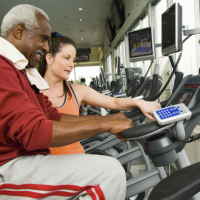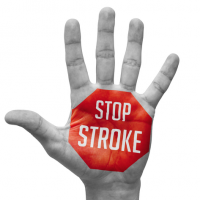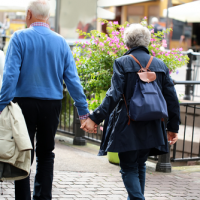Keys To Avoiding Injuries During Exercise For Seniors

Exercise is important for individuals at any age. As we grow older, however, it becomes increasingly vital and offers more and more benefits. Exercise unfortunately also holds risks for injury for seniors who may not have the strength or balance to complete some work outs. With the new year fast approaching, many of us will be starting new workout regimens in an attempt to be healthier. Before doing so, be sure to consult a doctor to better understand what will be beneficial to you and what could be dangerous. Here are some other precautions to consider also.
Dress properly
The proper attire for exercise will help a great deal when it comes to staying safe. That starts with choosing the proper footwear. No matter what the activity, your shoes should offer plenty of grip and support. If it's your first time wearing a new pair of shoes, try to break them in and get a feel for them before attempting any strenuous activity. This will minimize the risk of a slip or fall during your workout. Your clothes should be chosen carefully too. First, be sure no article of clothing is too loose so it doesn't get caught on anything or cause you to trip. Second, dress accordingly for the weather. When it's cold out, be sure to dress in warm layers, and when it's hot out, wear breathable clothing and be sure to protect yourself from the sun.
Inspect equipment
If you'll be using exercise equipment, a bicycle, or any other type of equipment, don't be in a hurry to take off. Make time to carefully inspect your equipment before each workout to be sure it's in working order. You should be able to spot any obvious issues. This will also help if you share equipment with others since you'll be able to double-check the amount of weight it's currently set to, or spot wet spots that could result in slipping. This is a simple task that can make a big difference.
Stay hydrated
This could be the most important tip on this list. Dehydration can cause dizziness, nausea, light headedness, and loss of consciousness. That risk can be exacerbated when you're around heavy objects like weights that you could hit your head on in the event of a fall. Staying hydrated starts well before your workout. Ideally, you'll begin hydrating the day before, then continue drinking plenty of water up to your workout, throughout your workout, and after your workout. As we age, we become less susceptible to thirst, which means our body isn't as good about warning us when we begin to become dehydrated. So, don't rely on thirst to tell you when to drink. Bring a water bottle with you everywhere and drink from it often.
Warm up and cool down
Finally, a key to avoiding injury during exercise is to properly warm up and cool down your body. That means stretching thoroughly before your workout, then starting out slow and working up to more strenuous activity. Then, you'll want to ramp down the activity and stretch again afterward. Not only will this help you to avoid injury during the workout, but it also helps keep your muscles from becoming sore and cramping, which could lead to falls well after your workout.
At Cura-HPC, we're dedicated to health for individuals of any age. We offer hospice care to those with life-limiting illnesses in order to increase comfort and improve quality of life. If you'd like to learn more about hospice services for yourself or a loved one, please contact us at 800-797-3839.



